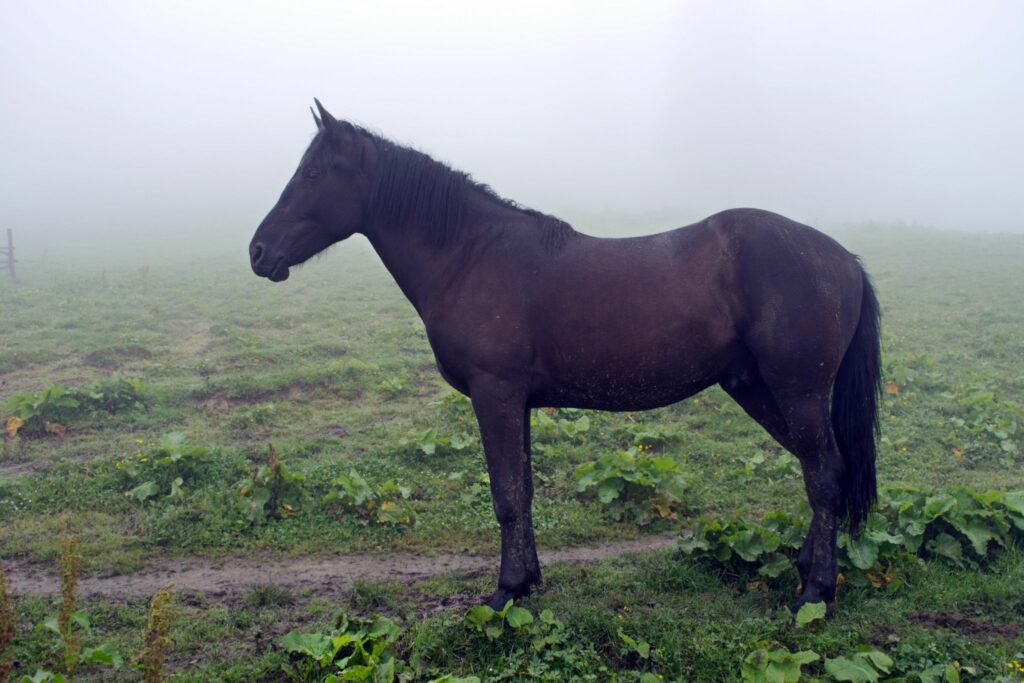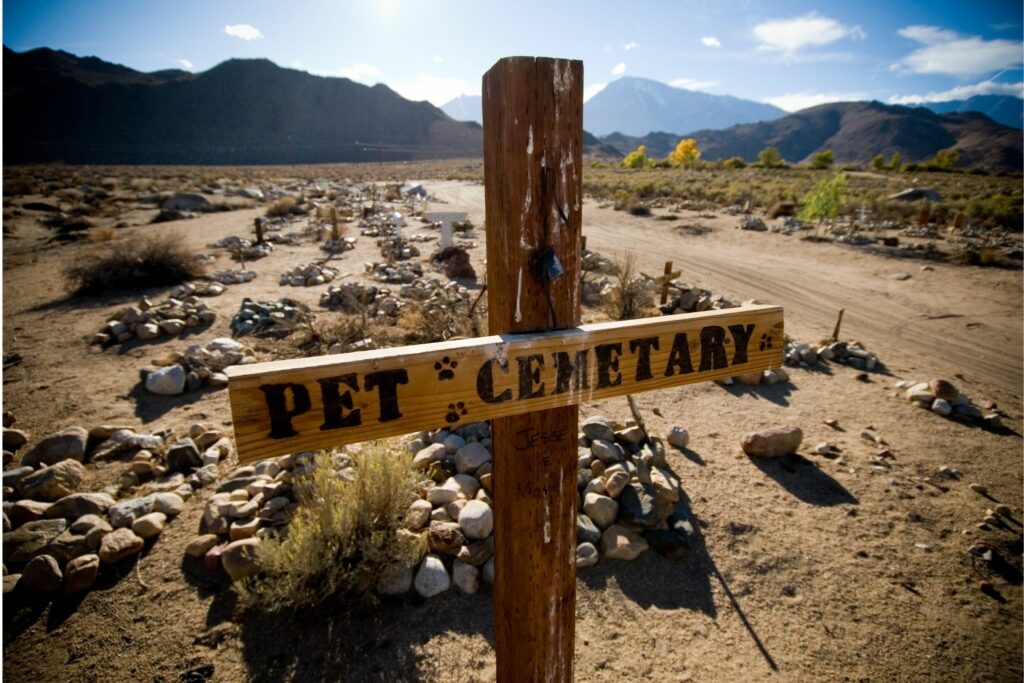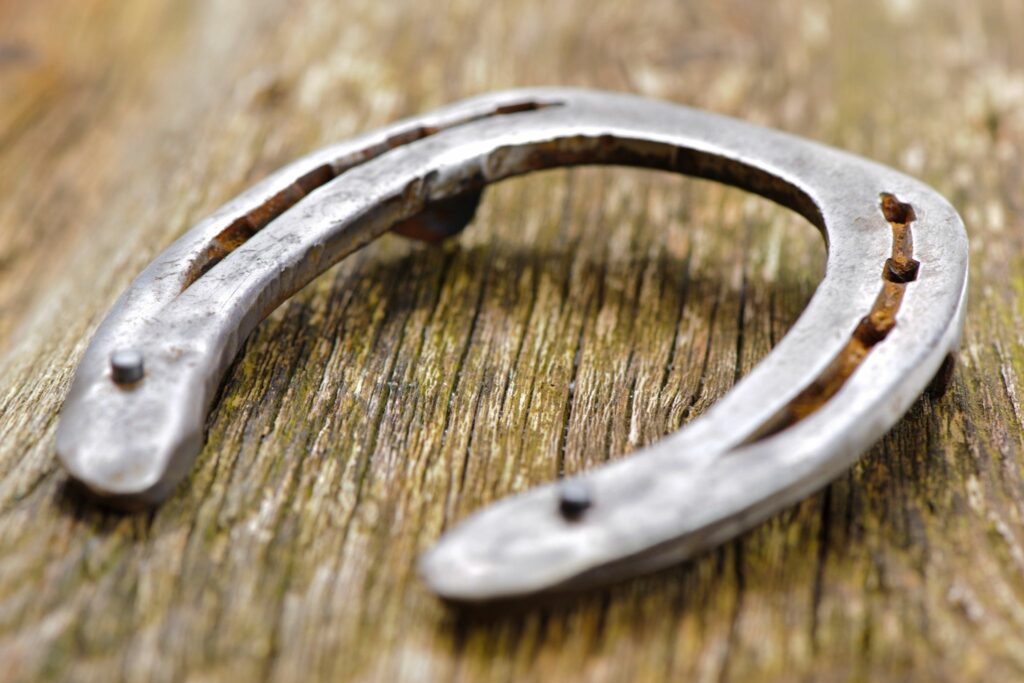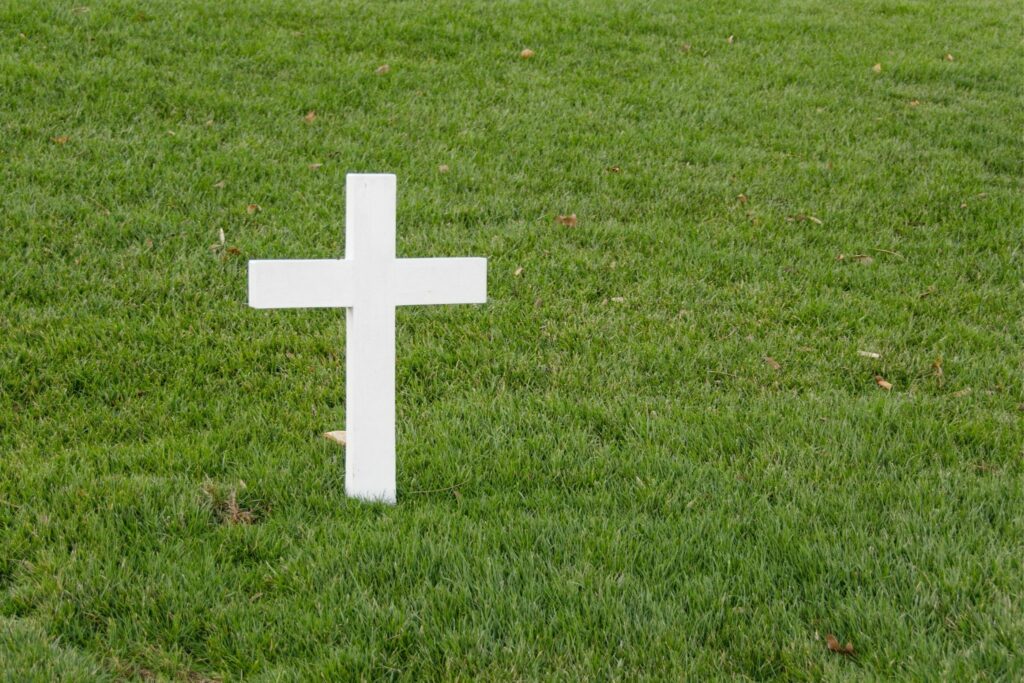Horse News
Member
Don’t Wait to Plan Ahead
Thinking about ending a horse’s life is always an uncomfortable, depressing topic—especially if you have a happy, healthy horse. Regardless, accidents happen and horses age. If you spend enough time with horses it is inevitable that you’ll be in a situation where you have to put a horse down. It’s an unpleasant and painful time, so it’s best to be prepared.
Make a plan in advance with your vet in case of an emergency end-of-life scenario. Decide on the method of body disposal you’re most comfortable with, and keep that phone number handy so you can avoid any extra research when it’s needed—under duress.
If possible, schedule the day ahead of time with your vet so you can spend some time with your horse and take off work. Don’t be shy about reaching out to friends, family, or professionals for help with grieving afterward.

The Importance of Planning Ahead
Every horse owner dreads the possibility of a panicked call from your barn owner. Your horse went down in the field and can’t stand up, he’s colicking, or has a nasty broken leg. When you’re stuck in a scenario where you have to make a quick decision, it’s easier if you’ve already made a plan.
Reasons to Make the Decision
There’s an endless number of reasons you may find yourself facing this horrible decision. I find reasons can generally be grouped into one of three categories: sudden and severe injury or illness, age/decline, or (rarely) a dangerous temperament.
If it’s an issue of temperament, make sure you’ve explored every possible training and rehoming scenario first. Many trainers and rescue groups are willing to take dangerous horses and attempt to rehab them.
Humane Methods
According to the American Veterinary Medical Association (AVMA), there are three humane methods to end a horse’s life: euthanasia (via intravenous overdose), gunshot, and penetrating captive bolt. Each method is only humane if administered by a trained professional.
The Event
Whether you’re forced to make a sudden decision or have been gloomily preparing for the chosen day, it won’t be easy. If possible, opt to have a friend or family member with you wherever you end up, whether that is with your horse or at home.
What to Expect
This can vary dramatically depending on the specific circumstances. If you have to make a choice in the moment, due to a severe injury or illness (such as a badly broken leg or horrible colic incident), trust your vet.
Vets don’t take this decision any more lightly than you, and if they advise that death is kinder, know it’s what is best for your horse.
If you decide to be there
When I decided to put my heart horse down (more accurately, when he told me he was ready and I finally listened), I chose to be there. This was definitely the right choice for me. I didn’t want his last moments to be spent with strangers.
Your vet will explain to you what’s going to happen. Generally, they’ll administer a sedative first so the process is as stress-free as possible. This means that once it kicks in, your horse is already gone (for all intents and purposes). They will no longer be aware of what’s happening. When they fall, twitch or even gasp, know that this is merely a reflex.
If you decide not to be there
For some people, the thought of being there is too much. If you choose not to be there, that’s OK, but try to find someone the horse knows who can be there (either a good friend, the barn manager or a fellow horse owner). Discuss all details in advance with your vet.

If you have time to prepare
Sometimes, we know the end is coming and have ample time to prepare. Realize however, no amount of time is ever enough—it’s normal to always want more time and have difficulty making a decision. This article about putting a senior horse down on a good day may be a helpful reference (albeit tear-jerker) for additional perspective.
Again, this is nothing any of us want to think about, but having a plan matters and can help alleviate some of the stress and anxiety that go along with this type of decision.
The After: What To Do with Your Horse’s Remains
Deciding what to do with your horse’s body is something you should determine in advance. If you don’t feel up to making the decision or making the arrangements, your vet can usually handle this for you.
Rendering
One of the most common methods involves a rendering facility hauling the body away to be made into things like soap, paint, cosmetics, or candles.
The cost can vary, depending on whether your request is an emergency or planned, as well as the distance from the farm to the plant. Plan on approximately $100-$300 for this method.
If you opt for rendering, it may be best to leave before your horse is taken away. This part can be stressful; remember, your horse is already gone.
Burial
This is what I chose for my horse. If you or a friend owns land, check into the laws in your area. In some places, it’s allowed (given certain conditions of location and depth are met), and in others, it’s not.
To bury a horse, the hole will typically need to be about seven feet wide and nine feet deep, as a minimum of three feet of dirt covering your horse’s body is required.
The cost for this method is mostly related to equipment, as most people don’t own a backhoe. Hiring a backhoe, plus an operator, could be anywhere from $300-$600+.

Cremation
Cremation is growing in popularity for many horse owners. You can arrange to have your horse’s body picked up, and cremated, and have the ashes returned to you (with a private cremation). A communal cremation is another option which allows the facility to handle the ashes.
This is the most expensive option, so plan for $1,000-$1,500.
Memories & Grieving
There’s no right or wrong way to remember and grieve your horse. The one thing I wish someone had told me was this: It doesn’t get easier, you just get used to it. Maybe you’ll feel better in a few days, maybe it will take a few years. However long it takes you to grieve, is perfectly fine.

4 Ways to Honor Your Horse
- Hair – Braid a piece of their forelock, mane, and/or tail to keep. There are also some services, such as Equine Keepsakes, that can take your horse’s tail and turn it into bracelets, necklaces, keychains, and more.
- Horseshoe – If your horse is shod, have your vet or farrier pull a shoe for you to keep.
- Nameplate – Keep the nameplate from your horse’s stall, halter, or bridle.
- Photobook – Use a service like Shutterfly to create a beautiful picture book to remember your horse by.
Resources for Grieving
Don’t be afraid to reach out if you need help moving through the grieving process. I did. Make an appointment with a licensed therapist, take a few days off work, or join an equine loss support group.
If you’re not sure where to begin, check out Hoofbeats in Heaven.

Frequently Asked Questions
Q: How much does it cost to euthanize a horse?
The cost depends on which method you and your vet select. On average, most forms of chemical euthanasia combined with sedation will cost about $250+, plus whatever amount for the method of disposal you decide on. You can always check with your vet and have the correct amount set aside in advance.
Euthanizing a horse is stressful enough—if you’re able to financially plan ahead, it lessens a little bit of the burden.
Q: When should you euthanize a horse with laminitis?
This decision is best made in conjunction with your vet. It can be hard to differentiate between your emotions and your horse’s quality of life.
A good indicator is to monitor your horse’s pain levels. Once they increase past a manageable level, it’s probably time.
Q: How do you dispose of a dead horse?
The most common methods to handle a horse’s remains include rendering, burial, and cremation. The method of euthanasia may influence handling methods, so it’s important to understand this when making a plan. For example, horses euthanized with barbiturates cannot enter the food chain, as the substance is toxic.
Q: What are the most humane methods to kill a horse?
The American Veterinary Medical Association (AMVA) outlines acceptable euthanasia methods. They include an intravenous overdose of barbiturate drugs, a gunshot to the brain, or use of a captive bolt device.
All three of these methods are only humane if performed correctly by a skilled professional.
Parting Thoughts
Deciding it’s time is never easy, and it’s always harder on you than on your horse. The best thing you can do is to make a plan well in advance of needing one. That way, should a sudden situation occur or when that dreaded day comes when your old horse tells you it’s time, you’re prepared.
The last thing you want to be thinking about is how your horse’s life is going to end. Instead, plan ahead so you can enjoy your last days and hours together.
P.S. Enjoy this article? Trot on over to:
- Horse care 101: Turnout blankets vs. stable blankets
- Horse Riding Equipment List: What You Need & What You Don’t
- Beginner’s Guide to Horse Hay Nets & Bags
- Horse Riding Gear for Beginners (Quick Print Equipment List)
- The Ultimate Packing & Horse Trailering Checklist
- What Gear Do You Need to Ride Horses as an Adult
Sources
https://www.worldhorsewelfare.org/advice/management/end-of-life
https://horseandrider.com/horse-health-care/euthanasia-when-its-time-to-say-goodbye-13204
https://www.chronofhorse.com/articl...hy-i-chose-to-put-my-horse-down-on-a-good-day
The post Equine End-of-Life: What Happens When Horses Die appeared first on Horse Rookie.
Continue reading...
